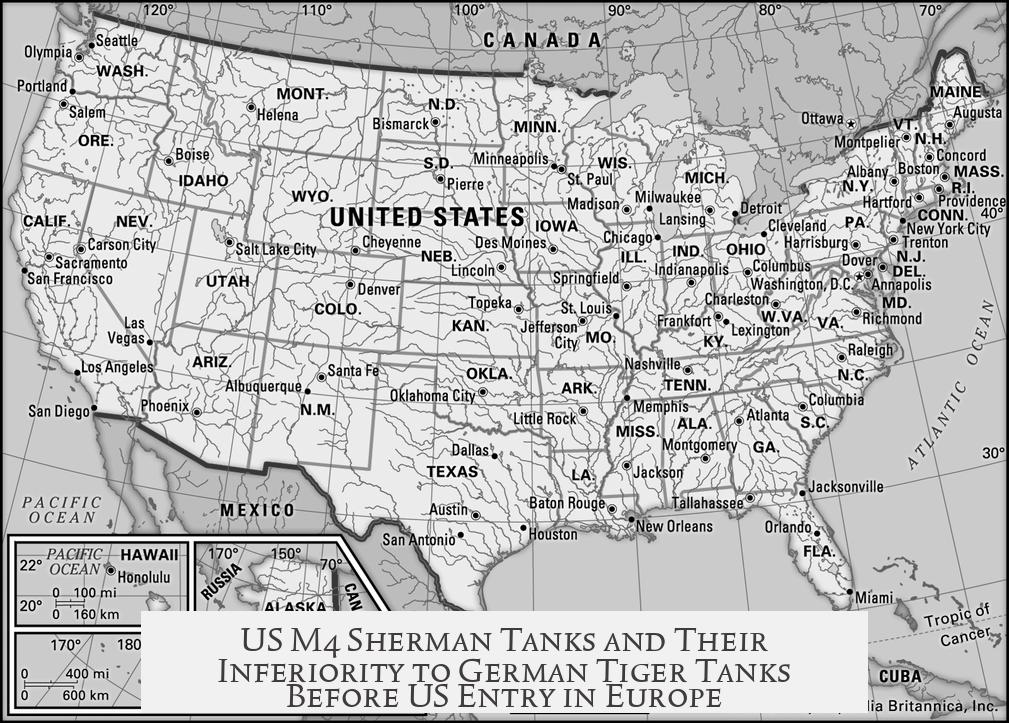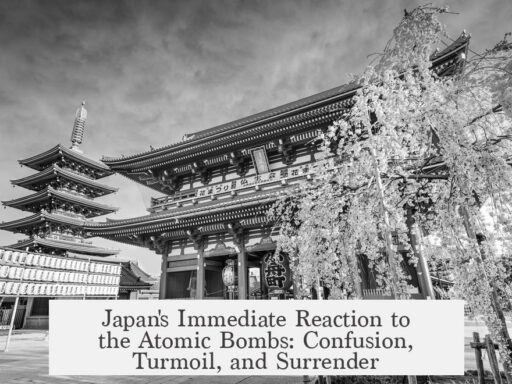The M4 Sherman tank was often seen as inferior to German Tiger tanks due to differences in armor, firepower, and tactical doctrine, despite intelligence available before the US entered the European theater. This inferiority was more nuanced when considering combined arms strategy, production constraints, and battlefield realities.
The perceived inferiority primarily stems from direct comparisons of armor and firepower. German tanks like the Tiger and Panther had thicker armor and more powerful guns. For example, the Tiger was heavily armored and mounted an 88mm gun, which could penetrate Sherman armor from great distances. The Panther’s high-velocity gun bested the Sherman’s armament in penetration capability. Shermans, equipped initially with a 75mm gun, struggled to destroy these German tanks effectively beyond close range. US tanks were out-maneuvered by Panthers and under-gunned against Tigers on a purely technical basis, leading many to believe Shermans were broadly inferior.
Intelligence assessments before the full-scale engagement underestimated the production and deployment of heavier German tanks. The US expected the German main tank threat to be the Panzer IV, for which the Sherman was considered sufficient. The sharper increase in Panther and Tiger numbers surprised US planners, reducing Sherman’s relative battlefield dominance. The war’s rapid demands limited time to design or mass-produce entirely new tank models. The priority was reliable, transportable tanks operable in diverse theaters, including overseas shipping, which favored lighter and more standardized vehicles like the Sherman.
US doctrine treated tanks as one element in combined arms warfare. The Sherman was designed as an all-around tank supporting infantry and exploiting breakthroughs rather than solely tank-on-tank combat. Emphasis was placed on production quantity, maintainability, and reliability under battlefield conditions over maximum armor or firepower. Shermans were easier to repair, more reliable, and could be produced at higher rates. They had radios for coordination, and their sloped armor (51mm at 56 degrees, about 90mm effective) was resistant to many German weapons, especially in the early war years.
- High-velocity guns mounted on German tanks, despite their anti-tank prowess, were poor for firing high-explosive (HE) rounds.
- HE rounds were vital for infantry suppression and attacking non-tank targets.
- The Sherman’s 75mm gun was versatile, able to engage infantry, artillery, and light vehicles effectively.
- German tanks like the Panther had design flaws such as shot traps making them vulnerable.
Logistically, the Sherman was well suited to US needs. Heavier German tanks had mechanical reliability issues, including frequent transmission failures and engine fires, reducing time spent operational on the front lines. The Tiger, although heavily armed and armored, was known as a “glorified bunker,” spending considerable time in depots for repairs. In contrast, the Sherman’s ease of maintenance and widespread availability gave it a significant practical edge, supporting sustained operations and rapid deployment.
Historical engagements demonstrate the Sherman’s battlefield effectiveness despite its disadvantages on paper. At battles like Arracourt, Shermans achieved favorable kill ratios against German Panthers. Studies of armored battles involving US divisions show Shermans destroyed more enemy tanks than they lost even when confronting Panthers. This suggests that tactical use, coordination, and combined arms support often mitigated raw technical inferiority.
The US military’s cautious approach to tank development reflected wartime experience and logistical constraints. Tank designs emphasized mature, reliable systems to avoid the pitfalls seen in previous conflicts. Emphasis on quantity and maintainability meant introducing heavier, more complex tanks was less feasible. US tanks had to be shipped across oceans, so size and weight were critical. Heavier German tanks posed transport and supply challenges that weren’t viable for US operations.
Finally, the Sherman’s design intent and the broader doctrinal context reveal why it was not built as a direct counter to heavy German tanks. US forces relied on air support, tank destroyers, artillery, and infantry to neutralize enemy armor threats. The Sherman was part of a broader combined arms ecosystem rather than a standalone armored monster. This practical mindset influenced design choices, production decisions, and battlefield tactics.
| Aspect | M4 Sherman | German Tiger/Panther |
|---|---|---|
| Armor (front hull) | Effective ~90mm (sloped 51mm) | Up to 100mm+ (Tiger front) |
| Main Gun | 75mm or 76mm (later); versatile for HE and AP | 88mm (Tiger), 75mm high-velocity (Panther); strong AP but poor HE |
| Reliability | High; easy to repair and maintain in field | Low; frequent mechanical failures and fires |
| Production and Deployment | Mass-produced; suitable for overseas shipping | Expensive and slow to produce; logistical burden |
| Tactical Role | Infantry support and multi-role combined arms | Heavy tank destroying and defensive strongpoints |
Key logistical and operational factors shaped Sherman’s characteristics. The US prioritized producing reliable, repairable, and effective tanks quickly. The Sherman’s design balanced firepower, armor, and mobility for general battlefield roles, not specialized tank-on-tank dueling. Intelligence underestimated German heavy tank numbers and capabilities, but US doctrine anticipated combined arms and air support countering that threat. Tactical results showed that Shermans were not simply outmatched; their practical advantages yielded battlefield successes despite technical inferiority in raw stats.
- US intelligence underestimated German heavy tank production and battlefield presence.
- Sherman design prioritized reliability, ease of maintenance, and versatility over pure armor and firepower.
- German heavy tanks had superior armor and guns but suffered mechanical reliability issues.
- US doctrine employed tanks as part of combined arms teams, not as standalone tank destroyers.
- Logistical constraints demanded lighter, transportable tanks deployable overseas.
- In battlefield engagements, Shermans often achieved favorable kill ratios due to tactics and support.




